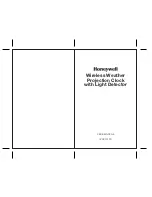
SA.45s Chip-Scale Atomic Clock
SA.45s CSAC User Guide Revision D
35
Figure 17 • CSACdemo Options for Datalogging to Disk
Click
to implement the new options or
to discard changes and exit the panel.
Apply Changes
OK
The data is stored in ASCII comma-separated values (CSV) format, which allows for convenient import
into most popular spreadsheet and analysis software. The first line in the file contains the column
headers (see
). Subsequent lines contain the corresponding
"Telemetry (6 and ^)" (see page 20)
periodically-polled data. The first column in the file contains time stamps, derived from the host
computer's clock, in Modified Julian Date (MJD) format, referenced to universal coordinated time (UTC).
3.7
Design Guide
The following sections are the design guide for the CSAC.
3.7.1
The Art of Disciplining
Implemented correctly, disciplining can be utilized to calibrate the CSAC frequency in the field, even if a
reference source is only occasionally or sporadically available, thereby improving the long-term
performance (phase and frequency drift) of the CSAC. At the same time, the disciplined CSAC may be
used to clean-up the short-term stability of an accurate, but noisy, reference source, such as GPS.
Implemented incorrectly, disciplining may degrade the performance of the CSAC. For example, the CSAC
disciplined with a short time constant to a source that is noisier than CSAC, such as GPS.
Implementing a successful disciplining strategy involves understanding the noise properties of the CSAC,
the reference source, and the phase meter, and selecting the appropriate time constant that makes the
best use of the available timing information.
The following graph shows typical instability (Allan Deviation) of the CSAC (in red), along with the noise
floor of the phase meter (in green). Also shown are the instabilities of typical reference sources, GPS (in
blue) and a high-performance cesium beam frequency standard (in purple).
Содержание SA.45s
Страница 1: ...User Guide SA 45s Chip Scale Atomic Clock...







































